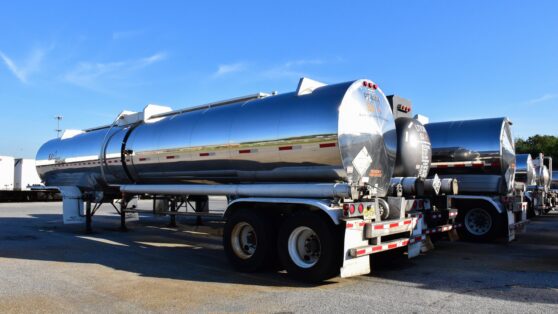The last year has been a more than a challenge for the trucking industry. The top five issues among motor carriers are driver shortage, retention, compensation, lawsuit-abuse reform, and truck parking. Many drivers left their work after realizing the importance of health amid the pandemic.
Drivers are the key to operating the fleet industry. So the question lyes, is the truck industry growing? What will happen to the trucking industry in 2022?
A Good Freight Cycle Amid Driver Shortage
According to American Truck Business Services (ATBS) president Todd Amen, “the present trucking environment is enjoying one of the best demands and is likely to continue until the end of 2022. This positive development is normally unprecedented, as a traditionally good trucking cycle is between 12 to 24 months before entering three to four years of a bad one.” But he predicts a longer than expected good freight cycle in 2022, totaling to a 30 month addition.
The driver shortage from 2021 has led to increased trucking rates. Although the average owner-operator income is at a high of $70,000 a year according to ATBS, the increase is from a lower capacity operating. Freight rates are also up and in demand from the COVID shutdowns back in spring.
These factors, along with an aging driver population, has also led to truck parts shortages that maintain the high freight rates. Amen predicts this will also continue throughout 2022.
Is the trucking industry slowing down, then, based on these costs and shortages? Amen observed that in the trucking industry, good times means operators are putting in fewer miles. Average owner-operator miles have gone down at 1.5% in the last 18 months.
It’s an effect of money flowing in, so the operators have more time to spend at home. The additional cash flow offers them more freedom and a work life balance.
Casting Light on Regulatory Work in 2022
While it took 10 months for President Biden to pass the largest infrastructure spending bill in history, he managed to sign $1 trillion into law. The infrastructure budget includes improving the country’s highways and major roads. Tens of billions are expected to rebuild roads and bridges, along with upgrading freight and passenger rail systems. Unfortunately, the signed law does not cover trucking regulatory moves for commercial vehicle and transportation regulations in 2022.
The slow approach of the Biden administration could cost undoing the deregulatory work from the Trump administration. Truckload Carriers Association (TCA) vice president of governmental affairs, David Heller, said that there were fewer regulatory pushes from the Biden administration compared to what they expected in the previous year. He hopes, however, that the driver capacity and supply chain issues in 2021 will drive the administration toward regulatory work in 2022.
The Case for Affordable Insurance Minimums
The infrastructure law left out a provision on increasing the minimum insurance liability. Back in 2020, the House attempted to increase the insurance minimum of heavy-duty vehicles carrying non-hazardous freight to $2 million. Given how big the industry is, raising the minimum would cost smaller carriers their entire budget. Other parties like independent contractors may not even be able to afford the raised minimum.
Heller observes that there needs to be more flexibility when it comes to making these provisions. Thankfully the upgrades and additions in truck safety technologies has helped reduce the frequency and severity of accidents. This may help make the case for more affordable minimums when insurance companies see how the technologies improve driver performance and prevent accidents with emergency braking.
Anticipating Truck Technologies
Among the trucking industry trends companies are likely looking into are electric trucks. These have entered the market and are likely to be more present in the beginning of 2022. Fleet owners and operators currently using gas, however, should note that the number of electric trucks ordered and produced are small.
But they can anticipate electric trucks penetrating specific applications as 2022 progresses. Autonomous truck technology, on the other hand, is not expected to make a mark in 2022. They will likely enter the market by the decade’s end.
The FMSCA announced in 2021 that rear impact guards on trailers will be included in the U.S. Department of Transportation inspection checklist for 2022. The 2021 infrastructure bill means the rear-guard requirement is now a law. This means that trucks without rear trailer guards can face fines of up to $16,000.
Truck drivers can expect to spend almost $4,000. The industry has a consensus that rear guards protect passenger vehicle occupants during crashes, but side guards require more studies to prove their safety. Heller explains that this technology doesn’t actually prevent accidents. It’s important for the trucking industry to emphasize safety and invest in a technology that will ensure everyone’s safety.
Final Thoughts
2022 looks like a productive and good year for trucking companies. Owner operators will benefit from high freight and trucking rates if they have the capacity to operate. However, the recently passed infrastructure law, freight and trucking costs, and continuing problems like driver shortage bring to light issues that need to be addressed. Here’s to hoping that the year continues the positives and resolves issues that could further improve conditions in the trucking industry.







